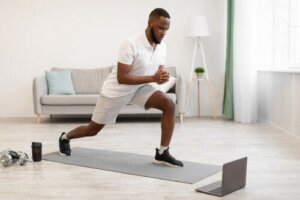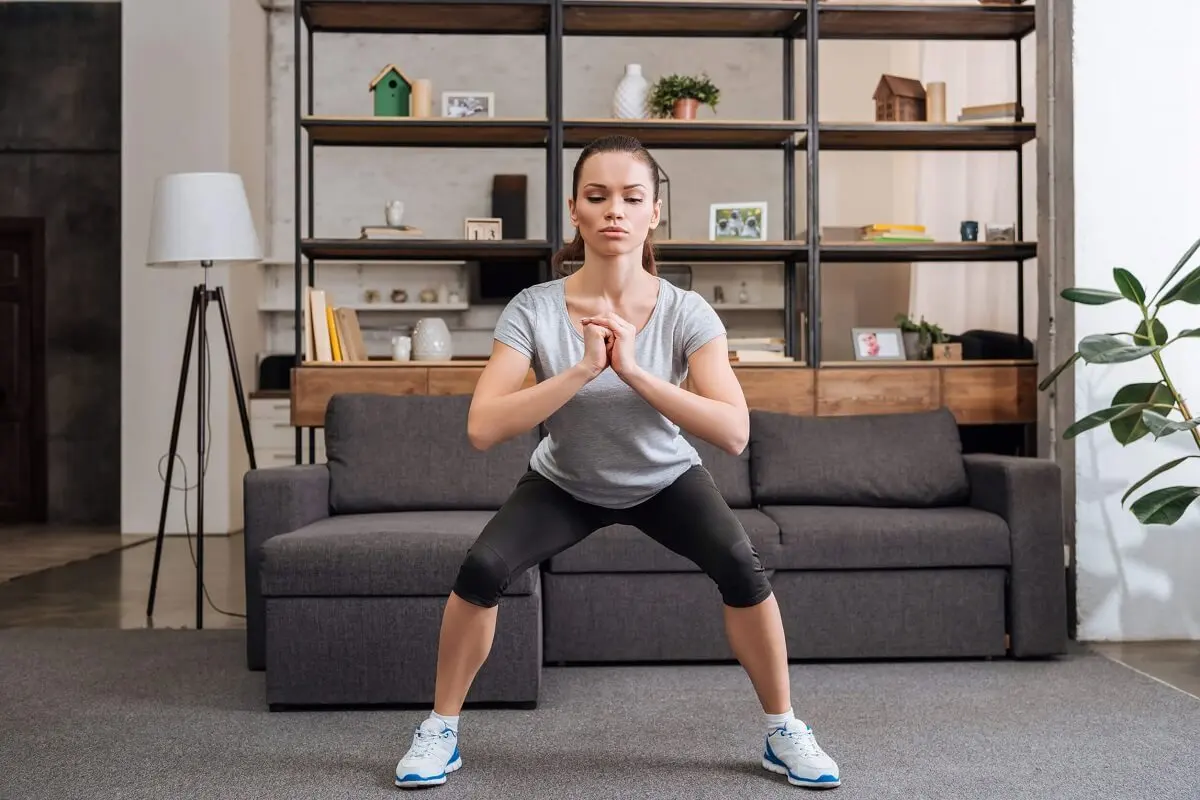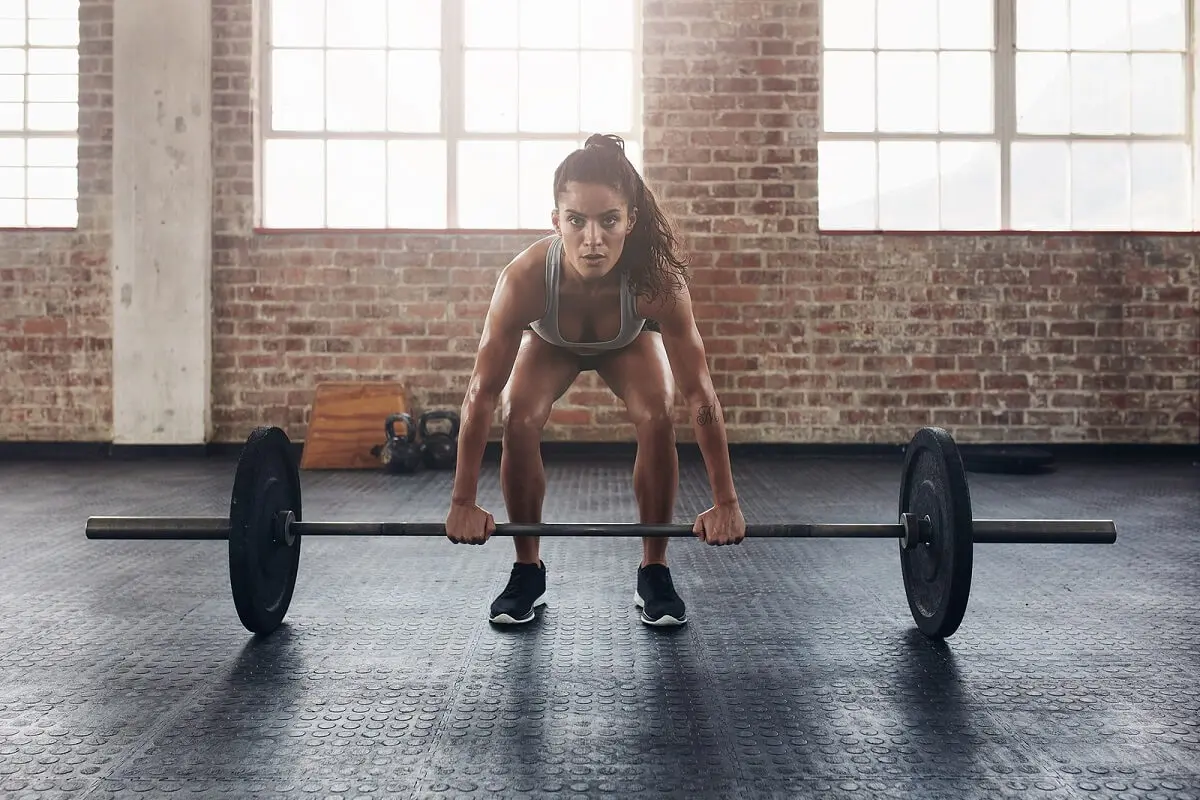The Benefits of Eccentric Leg Training and 6 Recommended Exercises


Reviewed and approved by the nurse Leidy Mora Molina
Eccentric leg training can enhance the benefits of exercise. But what does it consist of? Well, to understand it better, you need to pay more attention to all parts of the execution of the routine. Even if you are doing the movements well, sometimes there are parts that are not taken into account.
For example, if you are sitting down and raising your leg upwards, most often you concentrate your effort on raising it and do not apply an effective strategy at the time of lowering it. This is what eccentric exercise is all about. That is, they are practices where the muscle is lengthened while maintaining a muscle contraction. Want to know more about it? Continue reading!
Features and benefits of eccentric training for legs
This is an effective technique to gain strength faster. You work mainly on the flexibility of the muscle. Also, these movements are characterized by guiding you through three phases of muscle contraction.
For example, when you perform a squat, you go through these three stages; the eccentric (lowering) when you lower down and your quads lengthen. If you remain fixed in position, you experience the second phase, the isometric (transition), and finally, the concentric (lifting) phase when you stand up.
Practicing eccentric training for legs can benefit you from many points of view, because it allows you to exercise detailing and enhancing each step. Among the utilities are the ones mentioned below:
- You get better results in less time than with concentric training.
- If you like running, you increase the size of the fast twitch fibers, which are responsible for developing large forces at high speed and in short periods of time.
- You safely develop the flexibility of your legs.
- You invigorate the tissues put into practice, which reduces the possibility of injury.
- Enrich your brain’s ability to know the precise position of all parts of your body at all times.
- You strengthen the stability of your joints as an unconscious response to the constant practice of training.
- You improve the qualities of your tendon by promoting the regeneration of proteins such as collagen, which is responsible for holding together all the structures of the body.
- You facilitate the restoration of the muscles associated with wrist movements.

We think you may be interested in reading this, too: How to Get Jack Grealish Calves? The 5 Best Exercises to Achieve It
Times when eccentric training for legs is recommended
Anyone is capable of performing them. As they are recommended to rehabilitate the muscles, you need to consult with a physiotherapist or specialist who will tell you when is the best time to apply it above the injured muscle.
In addition to those moments when you suffer injuries, it’s also advisable to practice them when you want to strengthen specific areas of your legs that need to acquire greater performance. Similarly, your development and evolution as an athlete is a good reason to perform them.
6 exercises recommended in eccentric training for legs
These exercises seek to promote the development of the lower body areas. For each suggested exercise do 2 sets of 8 to 12 repetitions, 1 or 2 times a week. If you lift weights greater than 80% of your body volume, it’s advisable to reduce the number of repetitions between five and eight.
From the comfort of your home or in the formality of a gym, you can practice the following eccentric training exercises for your legs.
1. Squats with one leg
They are strong for the knee joint to cause an excess of eccentric load. Therefore, the movement consists of leaning only on one leg on the floor; the other leg is bent backward.
Then, you bend down slowly, pause for a moment, and then put both feet on the floor to go up with greater speed. You can add weight to your hands with a dumbbell or other object to increase resistance.
2. Stride plus squat
The stride refers to the position of the body in which one leg is placed behind and the other forward, with the knee bent and the foot resting on the floor.
Therefore, you perform this function in that position, but adding a squat and swapping legs on each repetition. Inside your home or in a gym, it’s worth adding weight on your shoulders, considering that it does not exceed 25% of your weight.
3. Hamstring curls
Lying up on the floor, hold one of your feet with the elastic band. The other leg is free for you to raise it at the same time as you raise your hips. You stay there for a few seconds, until the band begins to pull your foot to force you down.
In those moments, you lower the elevated leg and restart the movement. You should switch the foot holding the band to fortify both sides equally.
4. Deadlift
A deadlift is just that: a deadlift. Therefore, you should choose a load that represents up to 70% of your body weight.
With both legs resting on the floor, you lift the bar and then perform a slow and controlled eccentric descent, leaning forward and lifting back one of your legs.
All this is done while carrying the weights, until you lean forward enough to leave the bar on the floor again.

Like this article? You may also like to read: Discover the Importance of Keeping a Day Off Your Exercise Routine
5. Hip adduction
Lying on the floor, facing up, you rest your legs on the wall to gradually open your limbs without bending your knees. To return to the original posture, you bend your knees towards your chest, in order to avoid concentric effort.
6. Stir the pot
You will need a fitball to develop this. Here you work your body’s center of gravity and increase the level that your legs can support.
Lying face down towards the floor, legs apart, support your arms held by your hands, and start to slide them over the ball in a circular motion similar to stirring a pot. All this with your legs fixed to the floor, supporting the routine that the arms execute.
The importance of the previous preparation and the choice of the eccentric training level
The most advisable thing is to warm up your muscles before starting with the exercises. To do this, you can start by stretching your upper and lower extremities. It can be through a short run, with small jumps, or executing simple strides to all sides of your body.
Similarly, it’s essential that you choose the level of difficulty with which you want to start. It’s recommended to start at minimum levels and gradually increase the intensity. That is to say, adding more series of each exercise, increasing the number of repetitions, and dedicating more time to it than at the beginning.
For all this, it’s a good idea that for any decision that demands greater physical wear you consult with a specialist or a certified trainer who can establish the necessary limits according to your physical possibilities.
All cited sources were thoroughly reviewed by our team to ensure their quality, reliability, currency, and validity. The bibliography of this article was considered reliable and of academic or scientific accuracy.
- Gutiérrez J, Pérez J, Nobari H, Vivas J. Entrenamiento excéntrico como estrategia para mejorar el rendimiento en el cambio de dirección y el sprint en deportes de equipo: una revisión sistemática. E-motion. 2020; 14; 43-65.
- Carioca E. Efectos del entrenamiento de fuerza excéntrico versus concéntrico sobre el efecto cruzado. España: Universidad de León; 2014.
- Gómez D. Entrenamiento excéntrico con flywheel: mecanismos isoinerciales, rendimiento, prevención de lesiones y rehabilitación en pacientes con derrame cerebral. España: Universidad de León; 2016.
This text is provided for informational purposes only and does not replace consultation with a professional. If in doubt, consult your specialist.








